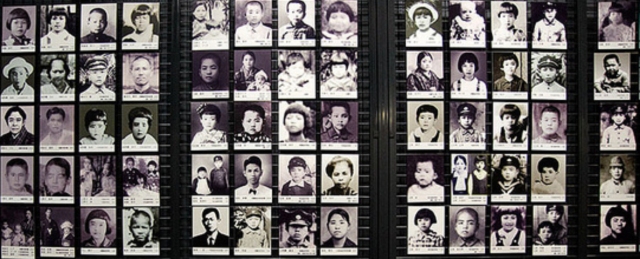On August 3, 1944 three small old merchant ships, overcrowded with roughly 1,000 Jewish refugees, left the Romanian port of Constanța at about 8.30 p.m. Sailing instructions from the German naval authorities were for the Morina, with 308 passengers, to sail first, followed by the Bulbul with 390 people and last by Mefküre with 320 refugees (the exact number may be slightly different). The vessels were ordered to sail from position 43°43’N 29°08’E strictly southward, a course that would lead them directly into the Bosphorus. Armed ships of the Romanian navy escorted the convoy and provided signal flags to aid their passage from the harbor and through the mined approach areas.
On August 5, 1944, about 40 minutes after midnight, Mefküre was about 25 miles northeast of İğneada, Turkey when flares from an unknown vessel illuminated her. Mefküre failed to respond and continued on. On the same night, at 2.00 o’clock, the German radio direct finding station at Cape Pomorie in the gulf of Burgas intercepted a radio signal of the Soviet Shchuka-class submarine, Shch-215, with a bearing of 116 degrees. “This bearing crossed the course of Mefkure and the two Turkish vessels almost exactly at the area where Mefkure was sunk during that night.”
On August 5, 1944, about 40 minutes after midnight, Mefküre was about 25 miles northeast of İğneada, Turkey when flares from an unknown vessel illuminated her. Mefküre failed to respond and continued on. On the same night, at 2.00 o’clock, the German radio direct finding station at Cape Pomorie in the gulf of Burgas intercepted a radio signal of the Soviet Shchuka-class submarine, Shch-215, with a bearing of 116 degrees. “This bearing crossed the course of Mefkure and the two Turkish vessels almost exactly at the area where Mefkure was sunk during that night.”
German historian Jürgen Rohwer claimed Shch-215 as the vessel which then attacked. Shch-215 fired 90 rounds from her 45-mm guns and 650 rounds from her 7.62 mm machine guns. Mefküre caught fire and sank. Her captain, Kazım Turan, and six of his crew escaped in a lifeboat but only five of the refugees survived. The number of refugees killed is unknown, but one estimate suggests it was 305 including 37 children.
On July 30, 1944 submarine Shch-215, under command of Captain 3rd Rang, A.I. Strizhak, had departed from Batum, operating at the approaches off Burgaz. This submarine, on the night to August 5, claimed the sinking of a big schooner with about 200 armed men aboard, answering the attack with rifles and light machine guns, and in addition one barkass, possibly a live boat. Shch-215 made the attack in position 42.00’N 28°42’E, at a distance of 19 nautical miles westward from the ordered course of the Mefküre.
A fortnight after the sinking, a JTA News report alleged that three surface craft had sunk Mefküre. The same report stated that Bulbul had been intercepted also, but was allowed to proceed after identifying herself; at daybreak she rescued Mefküre 's survivors. The Bulbul continued to İğneada, where her 395 refugees and the five surviving Mefküre refugees continued by road and rail to Istanbul. Morina also reached Turkey, and refugees from both ships continued overland to Palestine.
On July 30, 1944 submarine Shch-215, under command of Captain 3rd Rang, A.I. Strizhak, had departed from Batum, operating at the approaches off Burgaz. This submarine, on the night to August 5, claimed the sinking of a big schooner with about 200 armed men aboard, answering the attack with rifles and light machine guns, and in addition one barkass, possibly a live boat. Shch-215 made the attack in position 42.00’N 28°42’E, at a distance of 19 nautical miles westward from the ordered course of the Mefküre.
A fortnight after the sinking, a JTA News report alleged that three surface craft had sunk Mefküre. The same report stated that Bulbul had been intercepted also, but was allowed to proceed after identifying herself; at daybreak she rescued Mefküre 's survivors. The Bulbul continued to İğneada, where her 395 refugees and the five surviving Mefküre refugees continued by road and rail to Istanbul. Morina also reached Turkey, and refugees from both ships continued overland to Palestine.
Click HERE to search a list of 301 Jews aboard the Mefkure.









